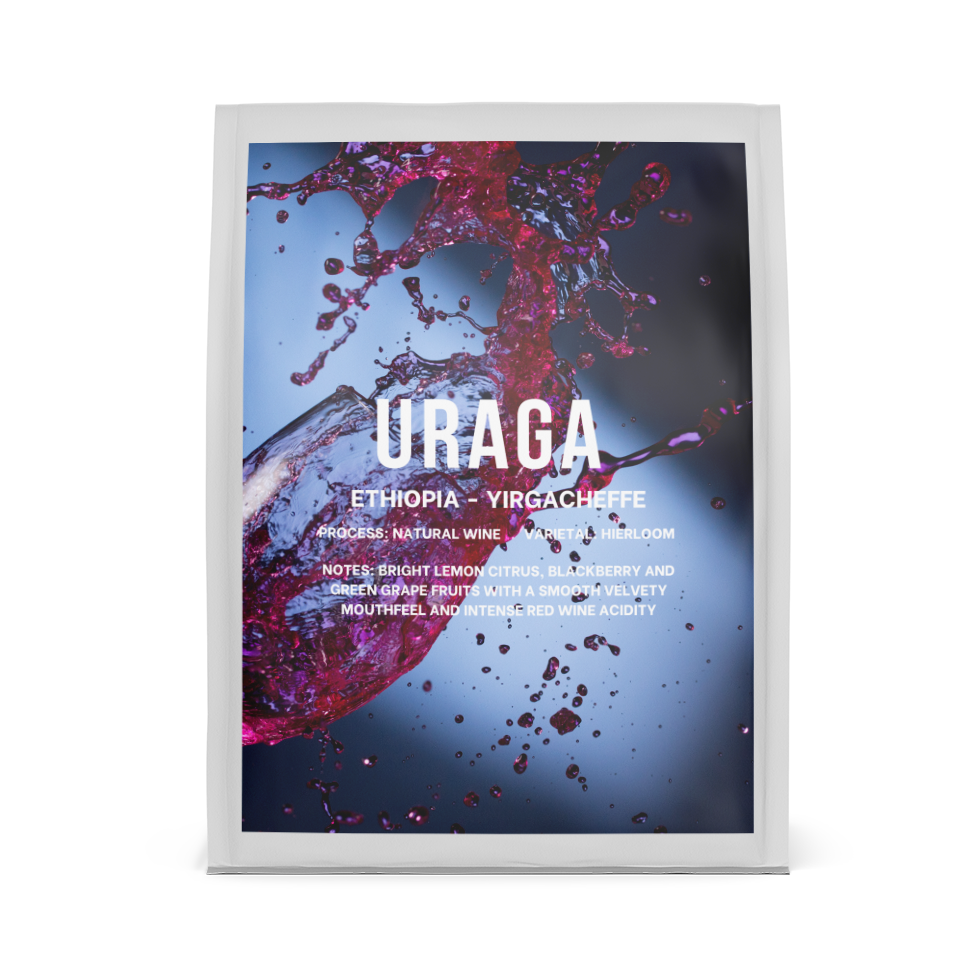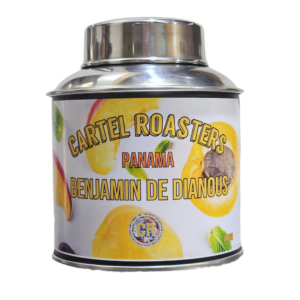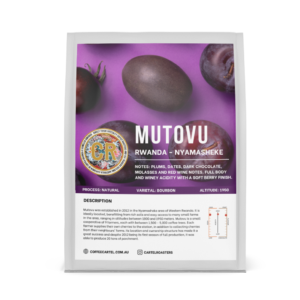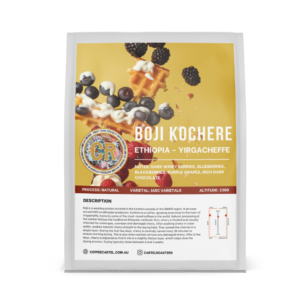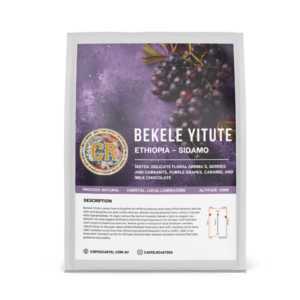About this coffee
- Altitude: 2110
- Farmer: URAGA
- Score: 88.5
- COUNTRY: ETHIOPIA - YIRGACHEFFE
NOTES: BRIGHT LEMON CITRUS, BLACKBERRY AND GREEN GRAPE FRUITS WITH A SMOOTH VELVETY MOUTHFEEL AND INTENSE RED WINE ACIDITY
Anaerobic (oxygen-free) processing method was introduced to the region in 2020. The process is to ‘ferment’ the coffee in a fully sealed and oxygen deprived fermentation tank. First, the cherries are collected and separated from under ripe, over ripe and green cherries. Then, only the best fully ripe cherries are selected and added to a special stainless-steel tank and filled until it is tightly-packed and sealed. The tank has air exhaust valve and temperature measurement to let gasses escape. When the fermentation process begins, CO2 builds up and the tank is filled by gas. Pressure pushes the water in the valve and CO2 out from the tank but restricts oxygen form re-entering. The time the cherry is spent in ‘fermentation’ is decided based on the temperature gauge reading. Higher temperatures mean the ‘fermentation’ time will be short, while cooler temperatures lead to longer time periods in the tank. Typically, the cherries will be fermented for 4-5 days as the pressure inside the tank forces the flavours of the juicy mucilage into the coffee beans. When the process is complete, the bright red cherry colour has charged to yellow tones.
Coffee still grows wild in Ethiopia’s mountain forests. Ethiopian farmers cultivate coffee in four different systems, which include forest coffee, semi-forest coffee, garden coffee and plantation coffee. About 98% of the coffee in Ethiopia is produced by peasants on small farms and it is the country’s most important export. Ethiopia is Africa’s third largest coffee producer. There are about 700,000 coffee smallholders in Ethiopia, of which 54 percent are in semi forest areas. Coffee has been part of their indigenous cultural traditions for more than 10 generations.
Coffee is traded on the Ethiopian Commodities exchange (ECX) which unique to many other countries sets its own prices. Ethiopia Produced 7.1 Million Bags of Coffee in 2017-2018. Most Ethiopian Coffee goes to Germany and Saudi Arabia (about 20% Each) while Australia takes 2%. While most coffee does go through the ECX, reforms recently passed by the government have allowed larger farms and co-ops to market and sell their coffees directly to consumers, resulting in increased traceability and fairer pricing
Amazing coffee!! I can’t believe the high quality yirgs coffee cartel can source. Absolutely stunning!
Love this as an Espresso
ETHIOPIA – URAGA GRADE 1 – YIRGACHEFFE – NATURAL WINE PROCESS
At first I had a bitter taste and wasn’t liking this coffee but i grinded it coarser for the extraction and its good.
Excellent flavour profile

